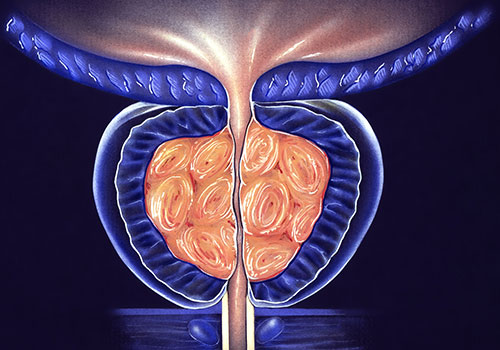

Prostate artery embolization (PAE) is a minimally-invasive, catheter-based, image-guided procedure used to treat symptomatic benign prostatic hyperplasia (an enlarged prostate). PAE is performed by interventional radiologists, who are doctors with specialized training in minimally-invasive, image-guided procedures.
In PAE, the blood supply to an enlarged prostate gland is blocked. This is done by injecting small particles into the arteries that supply blood to the prostate. This causes the gland to shrink.
It is performed on an outpatient basis and might sometimes require admission for a day or two. The procedure takes on average about an hour to complete.
These side effects are usually temporary and will resolve on their own.

There are multiple benefits of prostate artery embolization (PAE), including:
In general, approximately 80 to 90% of patients report a reduction in urinary symptoms and an improvement in urinary quality of life. Success rate is also dependent on the size of the prostate with patients with glands larger than 60 gms tending to have a higher success rate.
The risks of prostate artery embolization are similar to the risks of any interventional radiology procedure that can be managed effectively, such as
Prostate artery embolization is typically completed in about one to sometimes 2 hours based on the complexity of the patients prostatic blood supply .
Most patients can return home the same day after the procedure. Recovery time may vary, but most patients report an improvement in urinary symptoms within a week.
Many insurance plans cover this procedure, but coverage may vary depending on the individual plan.
Looking for an experienced interventional radiologist who can serve you with the highest quality of patient care? Give a call at +91-9063453805 to schedule an appointment today!